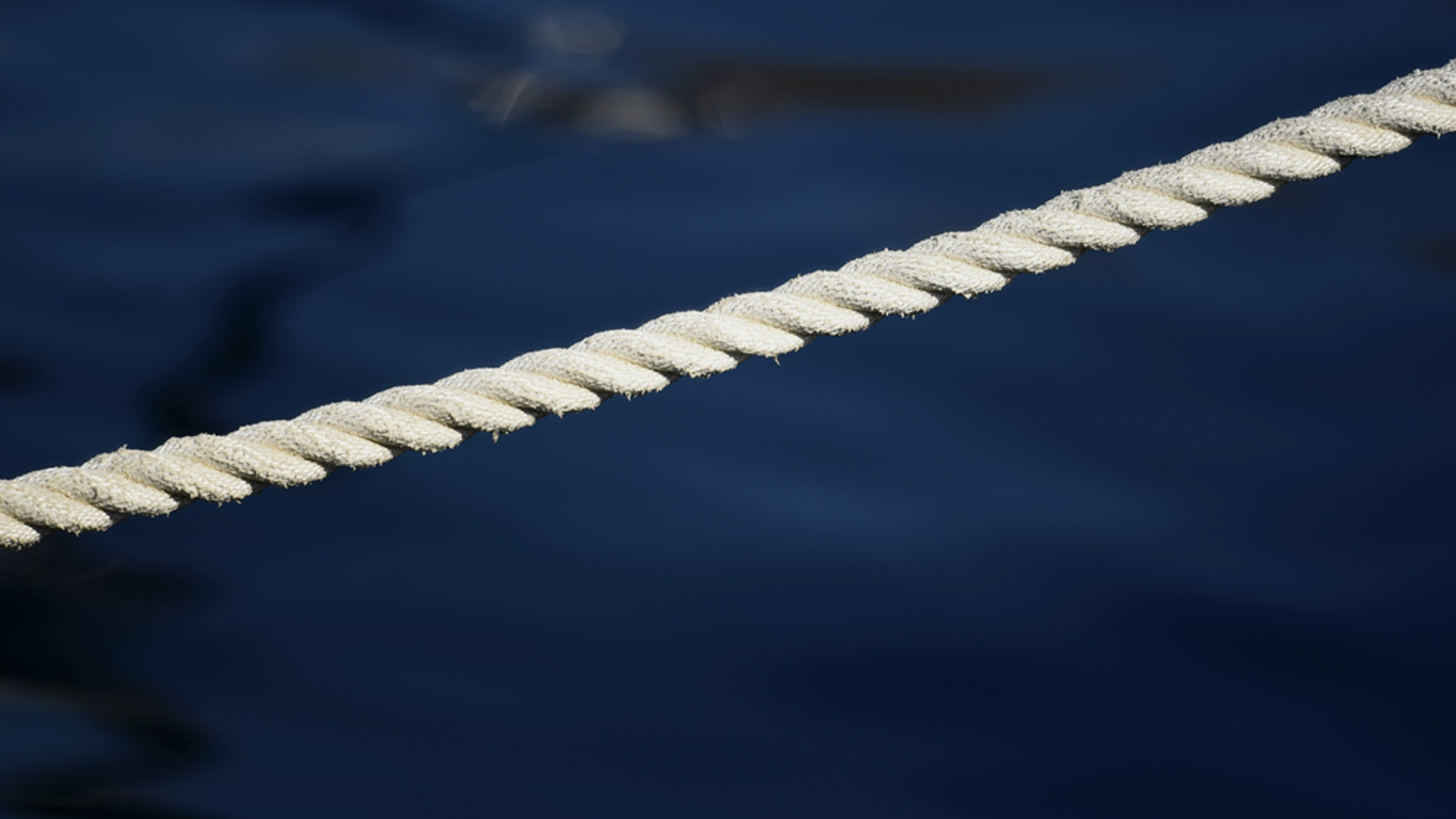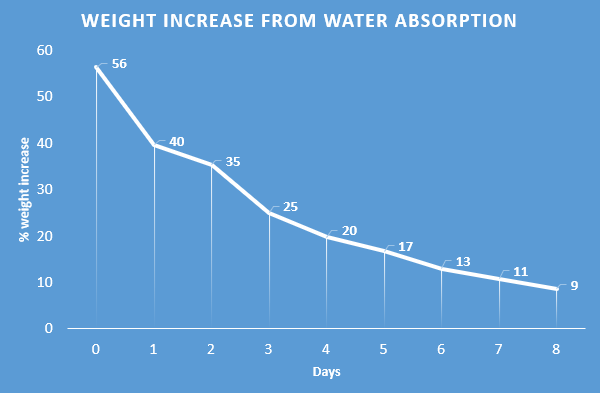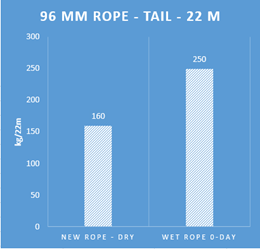Water absorption in polyamide tails can cause their weight to increase by 50%

Wilhelmsen insights
|
Andrej Babrnak, Technical Product Manager for Mooring Solutions Product Management

Polyamide, commonly known as nylon, is a synthetic polymer with a unique combination of properties such as high-tensile strength, durability with high abrasion and UV resistance, and outstanding elongation.
These characteristics make it a preferred material for special applications that require markedly higher elongation properties.
However, not all nylon's properties are immediately favorable in terms of rope strength and special precautions must be taken to get the best out of the rope and to ensure safe operations.
High density properties
Nylon's unhelpful property is water absorption resulting in loss of strength. The wet strength of nylon is approximately 80-90% of its dry strength, which makes humidity and water absorption a key factor influencing rope performance. For this reason, it is critical to ensure that the strength values for nylon ropes and tails stated on product datasheets corresponds to the value tested in wet conditions.
Nylon ropes have a higher density compared to conventional ropes made of polypropylene or polyethylene and do not float. In addition, water absorption can cause significant variations in mass. Wilhelmsen Ships Service conducted a study to examine the extent to which larger-sized nylon ropes can increase in weight and the typical duration required for a rope to dry after being immersed in water for a 24-hour period.

The weight increase chart shows that that the 96mm rope used in the study had a 56% weight addition when removed from the water.
The drying procedure took place at an ambient temperature of approximately 19°C and humidity level of around 38%. The evaluation of rope mass was conducted over an eight-day period.
After one day the weight addition was still at 40%, after three days at 25%, and at 9% on day eight.
This information suggests that ropes with higher mass face challenges in completely drying out, and that the slower drying process may take more than eight days to complete. Consequently, it is essential to factor in ambient atmospheric conditions such as temperature, humidity, and air circulation that will influence the drying time to become longer or shorter.
The following chart compares the tail weight before immediately after immersion in water (in this example a common tail of 22 meters with eyes). The tail showed a significant weight increase of 90kg from 160 to 250 kg.

Key takeaways:
- Drying period: It is important to be aware that larger-size nylon ropes could easily take more than a week to fully dry out.
- Wet nylon ropes may necessitate more manpower to handle as they can be more than 50% heavier than the original dry weight.
- Dry weight is approximately 30% higher than equivalent mixed composition tail.
- The strength of polyamide (Nylon) ropes decreases by 10-20% in wet condition.
Best practice:
- To maintain the strength of nylon ropes for safe operations, it is very important to let wet ropes dry properly taking into account the prevailing atmospheric conditions. In terms of precautions, polyamide tails should ideally be drained on deck after the vessel has departed the quayside. If reasonably practicable, tails can also be set under slight tension to squeeze out a fair amount of water to speed up the drying process. Avoid coiling or packing a wet rope to prevent the growth of mold and mildew.
- During rainy conditions, it is strongly recommended to protect ropes by using dry bags or covers to prevent water absorption and ensure optimal performance.
- Always use the wet strength value when selecting nylon ropes and tails.
For technical expertise, best practices, and industry guidelines for mooring ropes, please check out our comprehensive Ropes Knowledge Base Resource Page.